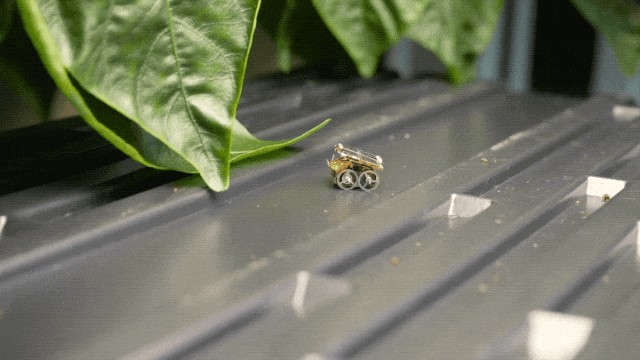
A “car” that can drive itself without a battery has appeared.
It will even automatically collect energy to continue running, without any mileage anxiety (manual dog head).

Yes, such a small robot actually relies on light and radio waves for power. Its name is MilliMobile, from the University of Washington.
Although it is only as big as a fingernail and weighs about the same as a raisin, it can easily carry equipment three times its own weight
and can not only run on concrete roads, but also in the "countryside" You can move freely even on dirt roads.

Small-sized sensor-carrying robot Robots are often used to perform industrial tasks such as detecting gas leaks and tracking warehousing. But a big problem it faces is that disposable batteries not only limit the service life of the robot, but are also not very environmentally friendly.
Researchers have been pursuing alternatives, such as tying sensors directly to insects

What needs to be rewritten is: △Image source: University of Washington
However, researchers at the University of Washington apparently believe that past methods were not controllable enough. They proposed a new idea, which is to use "intermittent motion" to drive the robot
To put it simply, on the one hand, it is to reduce the size and weight of the robot so that it can operate at extremely low power (below 57 microwatts) .
The researchers also conducted another experiment in which they installed film capacitors on the MilliMobile to store energy from sunlight and radio waves. When the energy stored in the capacitor reaches a certain threshold, the motor can be driven to generate a short motion pulse, so that the robot starts to move.

Seeing this, you may be confused A trace of doubt: That’s it? Can this robot really run?
The researchers really succeeded in the experiment: Even on a cloudy day, MilliMobile can move a distance of 10 meters in one hour -
The speed is indeed not fast, but the research Officials say that as long as it can continue to operate at this speed, it can bring new robotic capabilities to areas where it has been difficult to obtain data by deploying sensors in the past.
As mentioned before, although MilliMobile is small in size, it is very comprehensive in functionality, including the following:
In this way, MilliMobile has various sensing capabilities and can detect terrain for autonomous driving.
You can turn the light source by yourself to recharge yourself

Can complete rich spatial sampling and create a more detailed environment view.

# By optimizing the synchronous transmission protocol at the software level, data can also be transmitted within a range of 200 meters.
To briefly summarize, it can be said that MilliMobile has achieved autonomy in terms of power supply, control and communication.
Comments from the technology website said: This project has the flavor of science fiction brought into reality

What do you think?
Reference link:
[1]https://www.washington.edu/news/2023/09/27/millimobile-battery-free-autonomous-self-driving-robot- solar/.
[2]Paper address: https://homes.cs.washington.edu/~vsiyer/Papers/millimobile-compressed.pdf.
The above is the detailed content of Achieving 'autonomous driving' without batteries, the University of Washington develops a robot with unlimited battery life. For more information, please follow other related articles on the PHP Chinese website!




